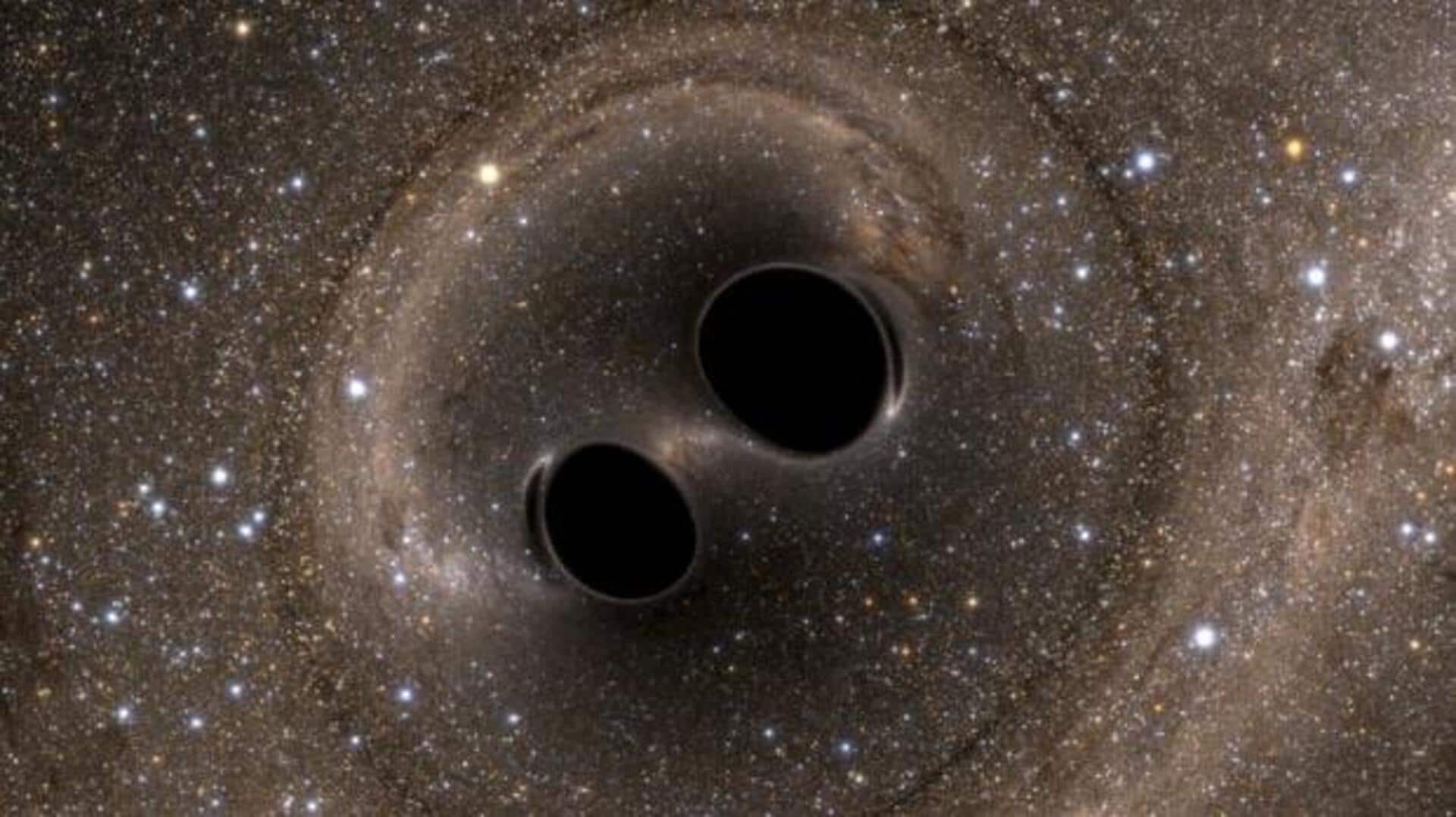
This is the biggest black hole merger ever detected
What's the story
The LIGO-Virgo-KAGRA (LVK) Collaboration has made a groundbreaking discovery by detecting the merger of the most massive black holes ever observed. The merger resulted in a final black hole that is about 225 times more massive than our Sun. This discovery pushes the boundaries of gravitational-wave detection technology and challenges current theoretical models of black hole formation.
Formation
A look at the event
The merger that created the new black hole in an event dubbed GW231123, involved two black holes, each about 100 and 140 times as massive as our Sun. Mark Hannam from Cardiff University and a member of the LVK Collaboration said, "This is the most massive black hole binary we've observed through gravitational waves, and it presents a challenge to our understanding of black hole formation." He added that such black holes are not allowed by standard stellar evolution models.
Spin dynamics
Black holes appear to be spinning rapidly
The black holes in the GW231123 event are not just massive, but also spin rapidly. Charlie Hoy from the University of Portsmouth and a member of the LVK said, "The black holes appear to be spinning very rapidly—near the limit allowed by Einstein's theory of general relativity." He added that this makes modeling and interpreting their signal difficult, making it an excellent case study for advancing theoretical tools.
Signal complexity
Signal from GW231123 event is highly intricate
The signal from the GW231123 event is highly intricate, with its exact nature still being studied. Gregorio Carullo from the University of Birmingham and a member of the LVK said, "It will take years for the community to fully unravel this intricate signal pattern and all its implications." He added that while a black hole merger is likely, more complex scenarios could explain its unexpected features.
Instrumentation challenge
Event pushes the edge of what's currently possible
Sophie Bini, a postdoctoral researcher at Caltech and member of the LVK, said, "This event pushes our instrumentation and data-analysis capabilities to the edge of what's currently possible." She added that the GW231123 is a powerful example of how much can be learned from gravitational-wave astronomy—and how much more remains to be discovered.